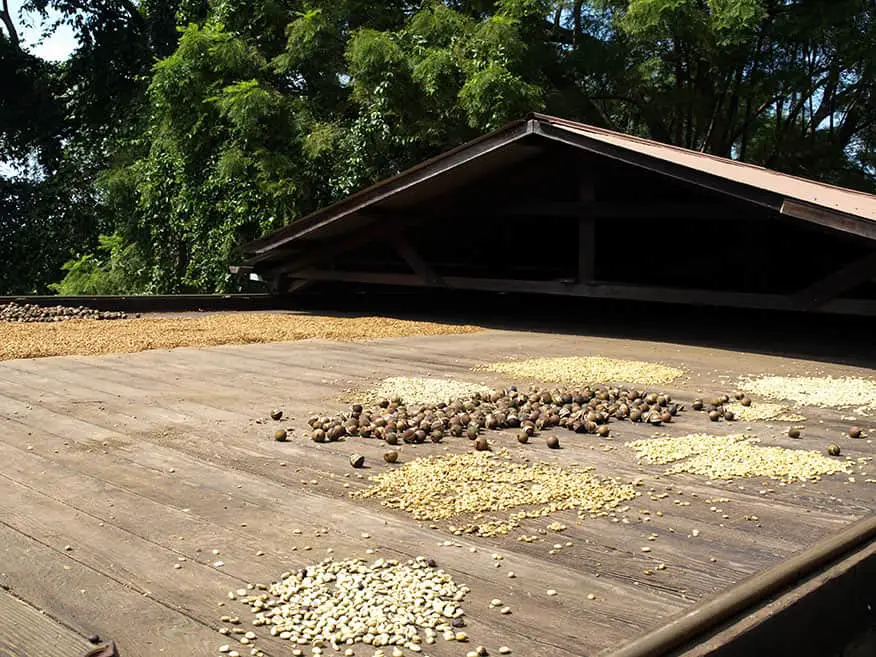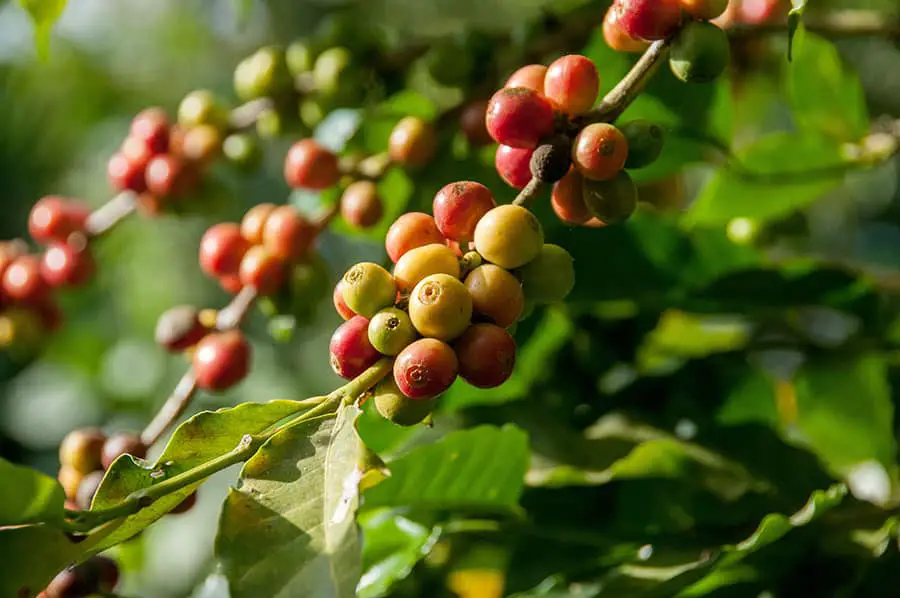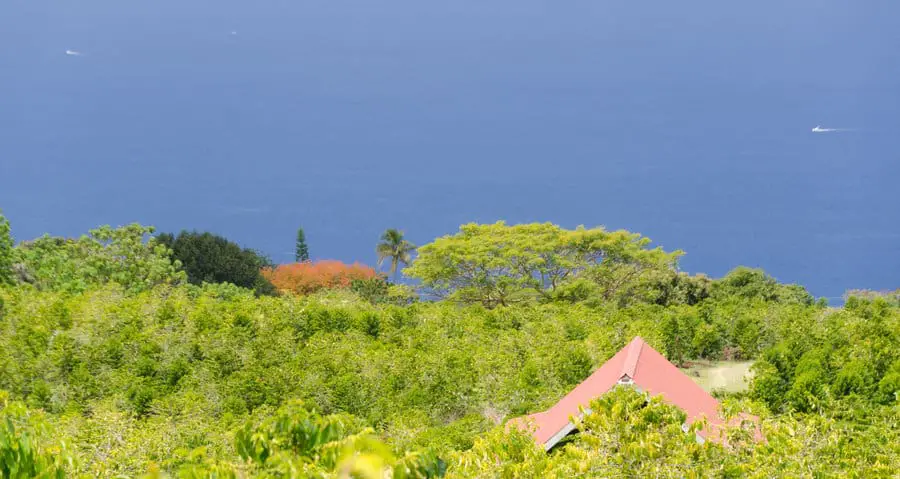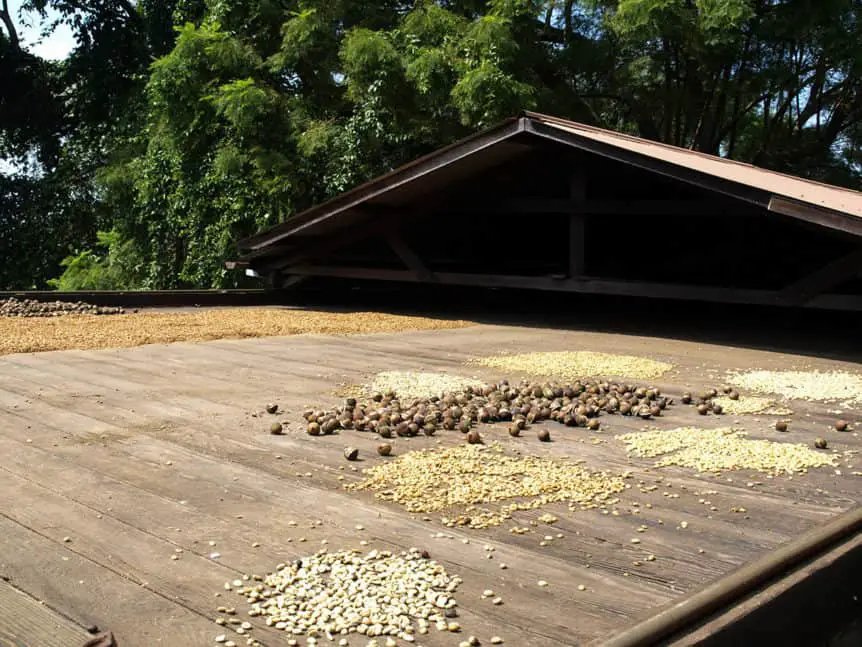
If you have heard the term Kona Coffee before and wondered what exactly was so special or unique about this coffee from Hawaii, you have come to the right place. I will explain to you exactly why what they say about Kona Coffee is true.
If your interesting in finding out more about Kona coffee, then read on. I will give you some tips on how to try or even buy true Kona coffee from Hawaii
What is So Special About Kona Coffee?
The reason that Kona coffee is so special is due to the atmosphere and environment in Hawaii. The combination of high elevation, the rich volcanic soil, cloudy coverage, and perfect growing temperatures make the Kona belt the perfect place to grow coffee.
In 1866, Mark Twain himself stated:
“Kona Coffee has a richer flavor than any other, be it grown where it may and call it by what name you please.”
Natural irrigation occurs as a result of these mountains, making ideal growing conditions. Typically, there will be sunny mornings followed by light afternoon rain. While all of the cherry fruit has to be handpicked, at least
Due to past scandals in the 1990’s which involved deceptively selling other coffee beans labeled as Kona, there are rigorous methods of testing involved in correctly labeling all Kona coffee.
The origin of every coffee bean that is exported from the state of Hawaii and labeled as Kona is tested and verified by the State of Hawaii Department of Agriculture. This was put in place due to the help of scientist Joseph Rivera who discovered the method.
When you combine the perfect growing environment with high standards of growing, strict labeling processes, and a cap on total growing area (increasing competition) you get the higher quality of coffee that Kona is.
Not only that, but everything that goes into growing Kona coffee is natural. Fertilizer is typically farm-made in the region, with compost consisting of seaweed, pruning clippings, cherry skins, coffee husks, and more. Donkeys, sheep, geese, and chickens roams the area, contributing to weed removal and pest control, as well as natural manure.
The History Of Kona Coffee
You may recognize the coffee from Hawaii and the Kona Coffee name because it is often more expensive than other coffees and is considered by many to be a gourmet coffee.
While coffee has been a staple of Hawaii taste for hundreds of years, it’s worth noting that it wasn’t always that way. The first coffee tree to be planted in Hawaii was from Samuel Reverend Ruggles, back in 1828. Before that though, this brewed drink was relatively unknown to the islands.
Not long after that, the English merchant Henry Nicholas Greenwell established Kona coffee as a brand later in the century.
The rest was history as it didn’t take long for this unique coffee to take off. Before the year 1900, there were reportedly over 3 million coffee trees grown in the region, although not all belong to the Kona belt, which we’ll talk about shortly.
It all started in the Kona District of Kailua-Kona. Kona Coffee represents a large percentage of all coffee beans in the area – up to 95% of total production.
Kona Coffee is distinct in that only coffee produced from this specific district can be called Kona. Today, there are over 800 farms that produce Kona coffee – all within the “Kona belt”, or a 30 mile long and 1 mile wide region.
Family farms have long been the tradition in the area, with each farm averaging less than 5 acres in size. The total acreage for growing is about 2300.
You might be wondering how Kona coffee is produced, grown, and processed – so let’s take a look at that now.
Growing and Harvesting Kona Coffee

Kona first blooms in the early months of the year, usually around February. During this time, you may notice small white flowers that cover the tree.
And by April, berries will begin to cover the tree – usually green in color. And by August, red fruit begin to ripen and are good for picking. Trees are typically picked between multiple times during this time period.
One major facet of growing Kona coffee is that all of these are handpicked. This can have an impact on cost (which we’ll talk about shortly) and contributes to the large amount of labor that is needed to produce them.
After picking the cherry (the red fruit), time is of the essence. Within 24 hours, it has to be run through a pulper.
During this process, the beans are removed from the pulp and then placed into a fermentation tank, which takes place over night. After about 12 hours, they’re placed on a drying rack, called a hoshidana, or drying rack.
At this point, the beans are kept there for about one to two weeks. Hawaii Department of Agriculture regulations require that they reach between 9-12% moisture, because too much can cause the the growth of harmful mycotoxins.
From the bean to the crop itself, Kona coffee is carefully tended to ensure the highest quality at all stages of production. In order to meet the high standards of the name itself as well as regulations, this process is among the most rigorous in the coffee growing world.
It even continues all the way down to the classification of the bean, which helps to distinguish the quality – which we’ll cover next.
What Are The Different Types of Kona Coffee Beans
Things get further broken down depending on the type of seed. There are type I and type II beans that contribute to the different types of Kona coffee.
Type I Kona Coffee Beans
These beans have two beans per cherry, while type II beans only have one bean per cherry. They are then further broken down depending on size, moisture content, and purity.
What does this ultimately mean? Type I beans are the highest quality. These end up in flavors like Kona Extra Fancy, Kona Prime, and Kona Select.
Type II Kona Coffee Beans
These beans are simply called Peaberry Number 1 or Peaberry Prime.In order for a coffee to be called Kona, it has to be from one of these two beans.
There are also Type III beans and lower but they do not qualify as Kona Coffee.
What are Kona Coffee Blends?
Due to the price of Kona coffee, many places sell blends instead. It’s worth noting that these are not blends of different types of Kona but rather mixed with other coffee beans – such as Colombian or Brazilian.
These are required to consist of at least 10% Kona beans in order to be classified as Kona.
With so many places opting to sell or serve a blend rather than pure Kona, due to price, one might ask why exactly does it cost so much? We’ll cover that next.
Kona Coffee and Its Appeal

Despite the higher price, many find Kona coffee appealing. With Hawaii being the only state to produce coffee in the US, many cite the favorable working conditions that accompany an ethically sourced bean.
The fact is, sometimes when buying other coffee, workers are paid very little, may have to work in harsher conditions, and so forth.
Flavor-wise, it has been described by many as having a slight taste of brown sugar, honey, milk chocolate, and a bright fruity flavor. It’s smooth and less acidic than some other types of coffee.
The good news is that there are many different farms that produce Kona coffee. The flavor and price may vary between them. Even though the Kona belt is only 30 miles long, the slope of the volcano and other various growing conditions can impact that.
There’s a variety of brands to choose from, and like other coffee, sometimes it’s just a matter of choosing the right ones.
The simple fact is you cannot find coffee like Kona anywhere else in the world. It’s location in rich volcanic soil coupled with an atmosphere unique to Hawaii lend it the ability to thrive.
While these conditions may also result in a higher price, they ultimately lend to a unique flavor and culture surrounding this coffee. When you buy Kona coffee, you’ll often be supporting family-owned businesses who support best practices, sustainability, and their workers.

